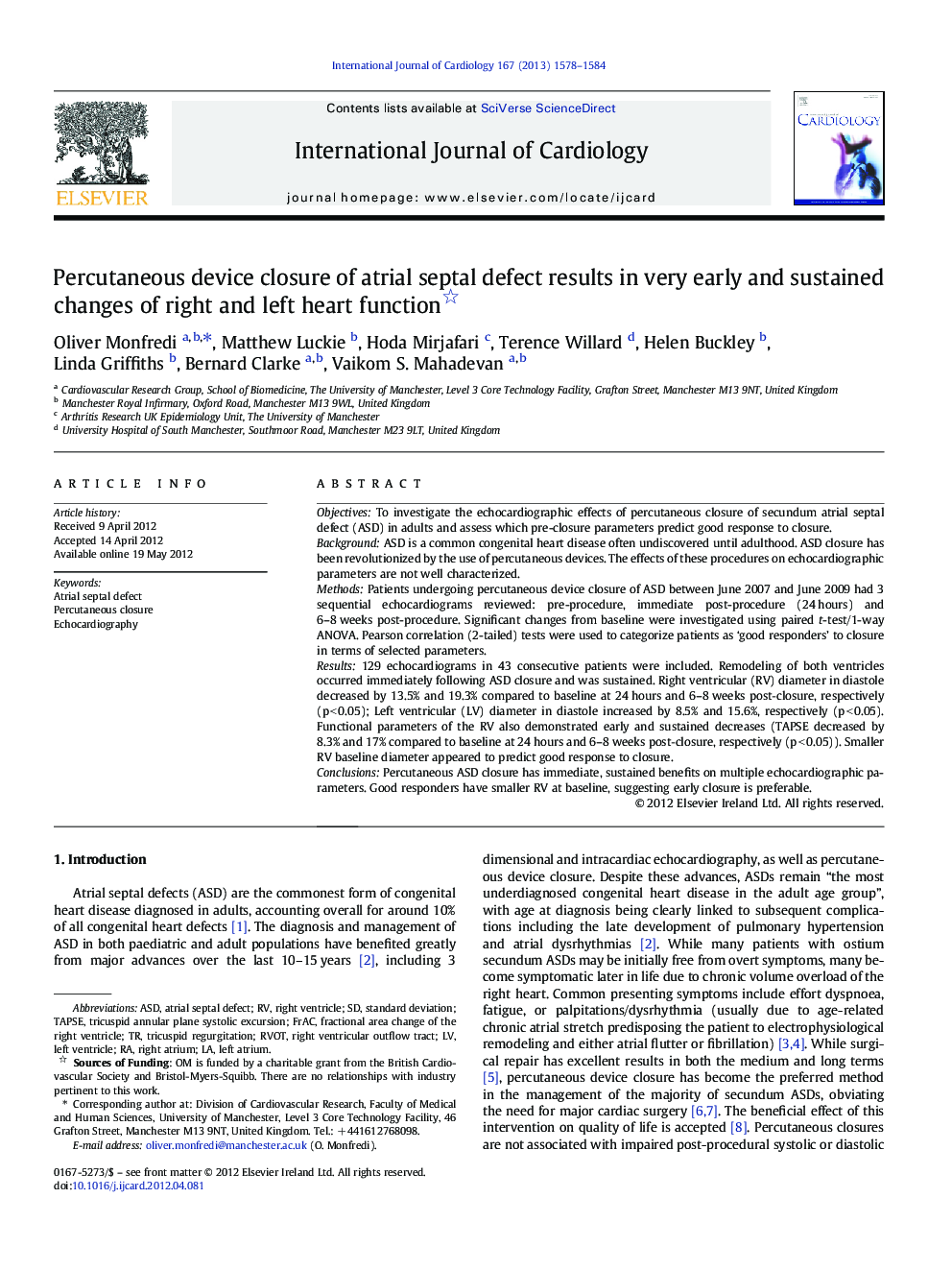| Article ID | Journal | Published Year | Pages | File Type |
|---|---|---|---|---|
| 5975649 | International Journal of Cardiology | 2013 | 7 Pages |
ObjectivesTo investigate the echocardiographic effects of percutaneous closure of secundum atrial septal defect (ASD) in adults and assess which pre-closure parameters predict good response to closure.BackgroundASD is a common congenital heart disease often undiscovered until adulthood. ASD closure has been revolutionized by the use of percutaneous devices. The effects of these procedures on echocardiographic parameters are not well characterized.MethodsPatients undergoing percutaneous device closure of ASD between June 2007 and June 2009 had 3 sequential echocardiograms reviewed: pre-procedure, immediate post-procedure (24 hours) and 6-8 weeks post-procedure. Significant changes from baseline were investigated using paired t-test/1-way ANOVA. Pearson correlation (2-tailed) tests were used to categorize patients as 'good responders' to closure in terms of selected parameters.Results129 echocardiograms in 43 consecutive patients were included. Remodeling of both ventricles occurred immediately following ASD closure and was sustained. Right ventricular (RV) diameter in diastole decreased by 13.5% and 19.3% compared to baseline at 24 hours and 6-8 weeks postâclosure, respectively (p < 0.05); Left ventricular (LV) diameter in diastole increased by 8.5% and 15.6%, respectively (p < 0.05). Functional parameters of the RV also demonstrated early and sustained decreases (TAPSE decreased by 8.3% and 17% compared to baseline at 24 hours and 6-8 weeks postâclosure, respectively (p < 0.05)). Smaller RV baseline diameter appeared to predict good response to closure.ConclusionsPercutaneous ASD closure has immediate, sustained benefits on multiple echocardiographic parameters. Good responders have smaller RV at baseline, suggesting early closure is preferable.
